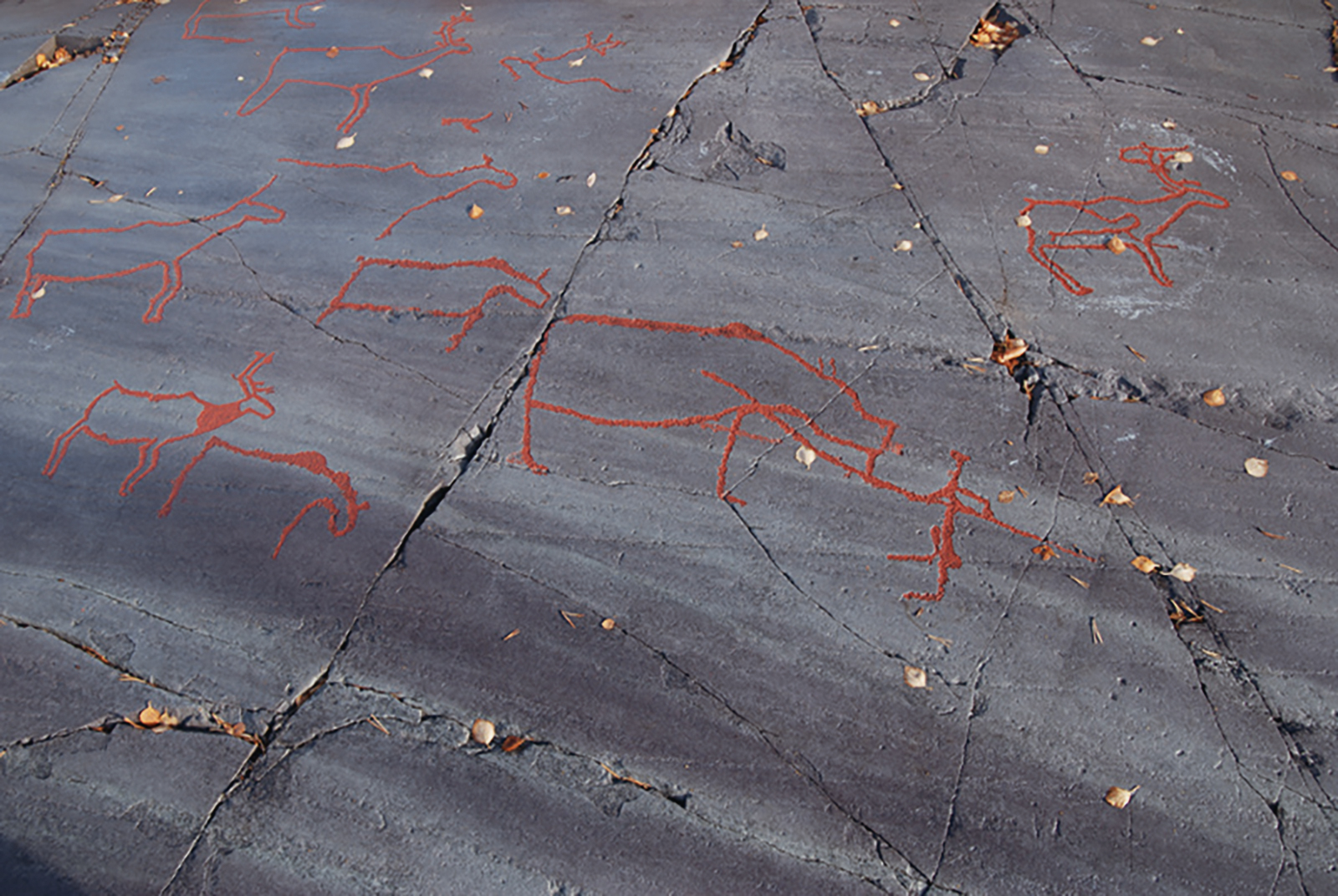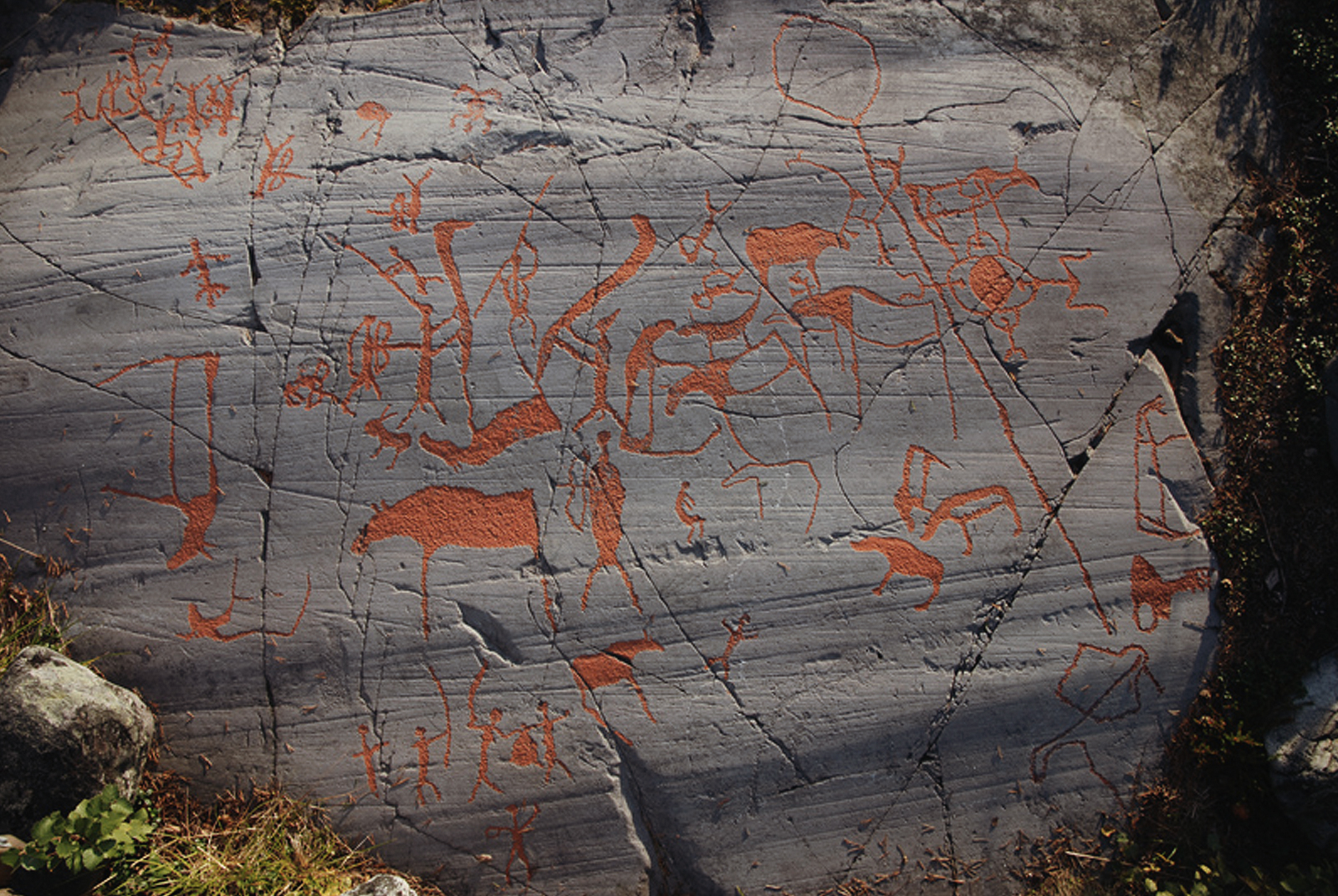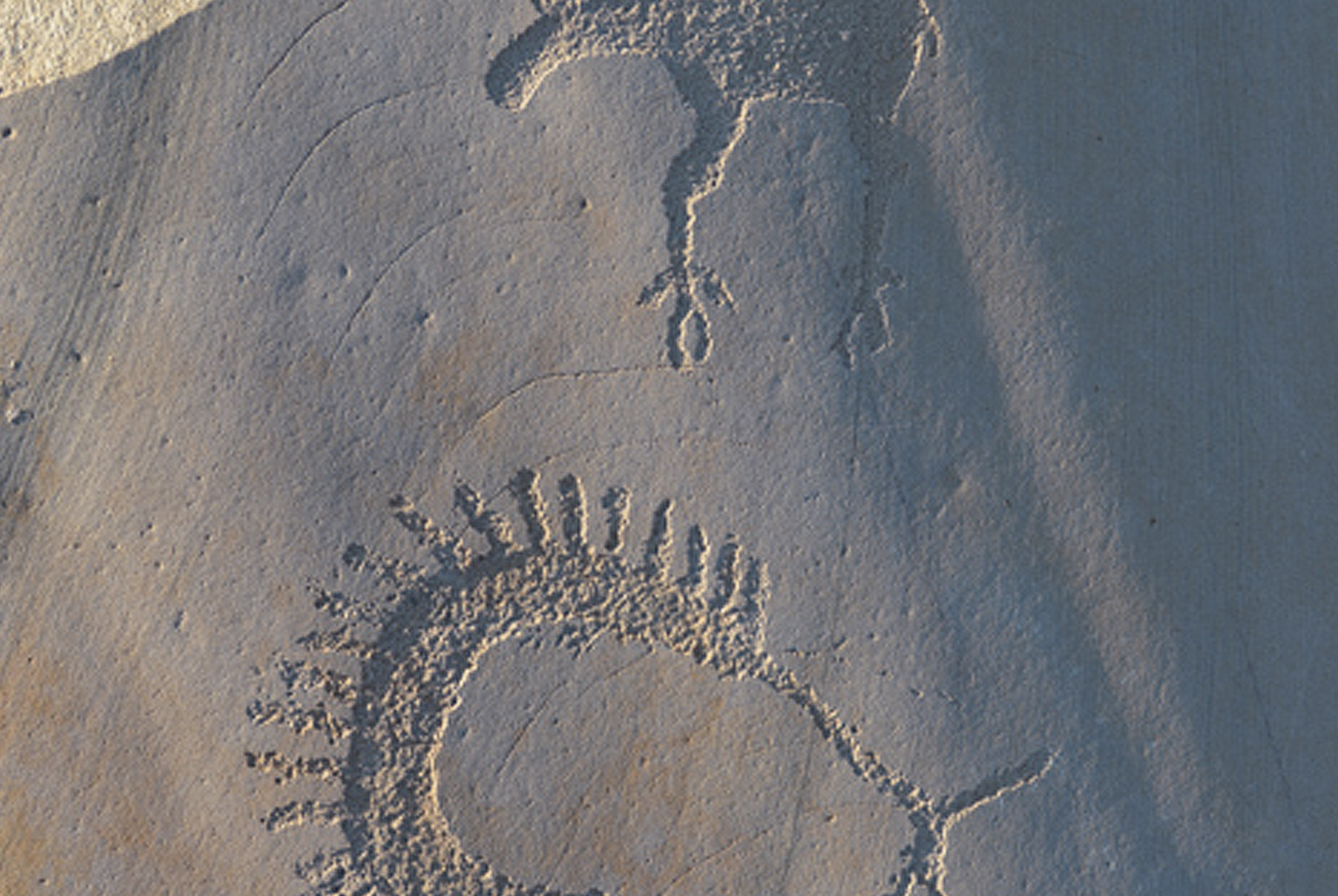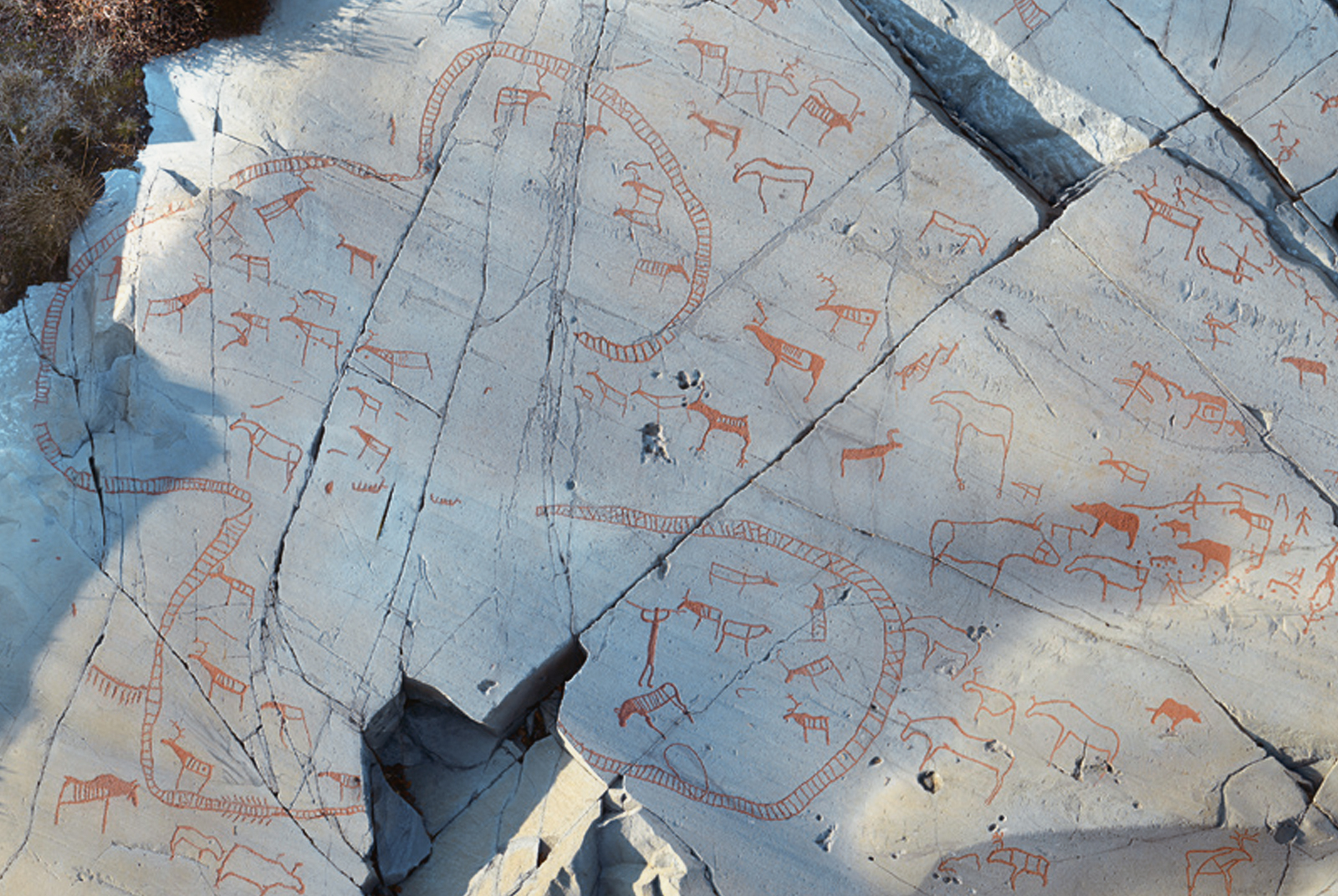



The prehistoric rock art of Alta displays some of the finest carvings in Europe, and is inscribed on UNESCO’s World Heritage List. This section is based on the collaboration between the World Heritage Rock Art Centre - Alta Museum and the Bradshaw Foundation, initiated by Norwegian archaeologist Rune Normann.
The World Heritage Rock Art Centre - Alta Museum plays a role model as a cultural center, with exhibitions that cover a long period of time and a wide range of themes; rock art of Alta, Sami Pre-historic religion, northern lights, salmon fishing in the Alta River, among others.
It has also launched a Digital Rock Art Archive which provides in-depth material on the rock art of the municipality of Alta. Presented in both Norwegian and English, the Archive provides an interactive map with data browsing and download facilities.
Hjemmeluft, Kåfjord, Transfarelv, Storsteinen, Amtmannsnes [UNESCO's World Heritage List], Isnestoften & Tollevik. Full descriptions of each of the sites can be found on the World Heritage Rock Art Centre - Alta Museum website, and in the Digital Rock Art Archive.
The World Heritage Rock Art Centre - Alta Museum is located in the town of Alta in Finnmark, Northern Norway. The museum is in Hjemmeluft, roughly 5 km from the town centre. Close to the museum is one of the five rock art areas inscribed on the UNESCO World Heritage List in 1985. For information about the rock art, the Collections, the Permanent and Temporary Exhibitions and Activities, and how to plan your visit view the World Heritage Rock Art Centre - Alta Museum website. The museum is open year round, but the rock carvings can only be seen in the snow-free season, from May to October.
Visit the Alta Museum website:
→ World Heritage Rock Art Centre - Alta Museum
The rock art of Alta is now also available online in Alta Museum's digital rock art archive. Anyone who would like to study the rock art in detail can do so through the archive's rich and varied graphic material. The contents of the Alta Rock Art Archive are continuously expanded and will also include texts, management documents, videos and other documents containing information about the rock art and its history.
In the Rock Art Archive the world heritage of Alta is made available to everyone. Rock art which is otherwise not possible for the public to experience can now be visited through the archive. The Rock Art Archive is initially meant to be a resource for the heritage management and rock art research. By making the archive accessible to all, the Alta Museum aim to increase the knowledge and interest in the world heritage of Alta among the general public.
Visit the Alta Digital Rock Art Archive:
→ Alta Digital Rock Art Archive
The rock art in Alta was created by people who hunted and fished. The art not only reflects the natural surroundings and the resource basis [selection of animals depicted - reindeer, elk, bear, dog/wolf, fox, hare, goose, duck, swan, halibut, salmon, whale], but also their beliefs and rituals, and the figures may have been elements in myths or stories. Scenes depict hunting, gathering and fishing as well as dancing and rituals.
The rock art in Alta was inscribed on the World Heritage List in December 1985, as the only prehistoric cultural heritage monument in Norway. It consists of four areas of rock carvings (Hjemmeluft, Kåfjord, Amtmannsnes and Storsteinen), and one area of rock paintings (Transfarelvdalen), and listing just over 3,000 carvings and paintings. They are concentrated heavily at the end of the Altafjord. Since 1985, rock art has been discovered at two more locations - Isnestoften and Tollevik. Whilst these two sites are not officially part of the world heritage listing, they are currently managed in the same manner. Today, in total, there are more than 6000 registered carvings and paintings spread out over some 100 panels. Rock paintings constitute only six panels with about fifty paintings all together. Most of the carvings are located at Hjemmeluft - the location of the World Heritage Rock Art Centre - Alta Museum - and in terms of preservation is the only area that has been facilitated for visitors.
Alta has the largest concentration of rock art in Northern Europe made by people with a hunting-fishing economy. The rock art consists of carvings and paintings made between ca 7,000 to 2,000 years ago. All the rock art sites in Alta are open-air sites.
This first occurred 60 years ago. The small stone known as Pippisteinen - The Pippi-stone - which was found close to Isnestoften on the westside of the Altafjord.
Following this in 1966 the rock paintings in Transfarelv were discovered and reported to Tromsø Museum. Several further rock carving areas were discovered in the Altafjord during the 1970’s. All of the four rock carving areas on the World Heritage List were discovered during this decade - 1973, 1977 and 1978. Within the World Heritage Areas several more panels and carvings have been discovered since then, and continue to do so today.

It is believed that the rock carvings in Alta were made close to the sea, on rocks by the shore. As the land rose with the end of the Ice Age and new, smooth rocks appeared, these were in turn used for carvings. The oldest panels are therefore high above the modern sea level, while the younger carvings are located lower down nearer the sea level. It is unclear whether the rock paintings had the same close attachment to the sea and the beach. Based on the meters above sea level Professor Emeritus Knut Helskog at Tromsø University Museum dated the rock carvings in Alta to the period from around 4200 B.C. to 200 A.D. Within this period of time the rock carvings are divided into five distinct phases based on stylistic changes:
However, archaeologist Jan Magne Gjerde suggests that the rock carvings in Alta are older than this:
Table below indictates the changes in the rock art of Alta Norway over time. Diagram created by Karin Tansem, VAM.
| Human | Reindeer | Elk | Fish | Boat | Bear | Bird | Geometric/ abstract |
|---|---|---|---|---|---|---|---|
| 22-26,5 masl - Hjemmeluft, Kåfjord and Storsteinen - Ca 7000-6000 years old | |||||||
 |
 |
 |
 |
 |
 |
 |
 |
| 17-21 masl - Hjemmeluft, Kåfjord and Storsteinen - Ca 6000-5000 years old | |||||||
 |
 |
 |
 |
 |
 |
 |
 |
| 14-17 masl - Amtmannsnes and Storsteinen - Ca 5000-4000 years old | |||||||
 |
 |
 |
 | ||||
| 10-13 masl - Hjemmeluft - Ca 4000-3000 years old | |||||||
 |
 |
 |
 |
||||
| 9-10 masl - Hjemmeluft - Ca 3000-2000 years old | |||||||
 |
 |
 |
|||||



































